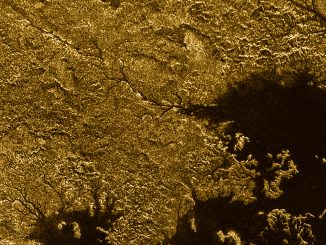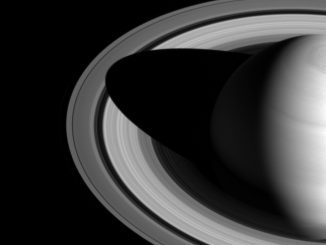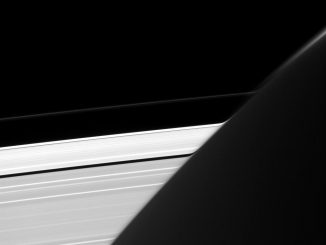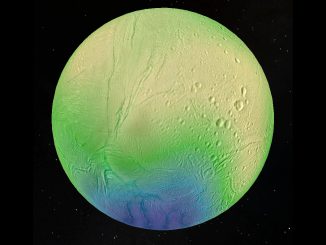
Saturn


Saturn’s seasonal shadows
The shadow of Saturn’s globe on the rings, which stretched across all of the rings earlier in the Cassini spacecraft’s mission, now barely makes it past the Cassini Division. The changing length of the globe’s shadow marks the passing of the seasons on Saturn. As the planet nears its northern-hemisphere solstice in May 2017, the shadow will get even shorter.





See the Moon meet Mars and Saturn
In the bright evening twilight of 14, 15 and 16 July, observers in the British Isles and Western Europe can see the waxing gibbous Moon pass by Mars, first-magnitude star Antares in Scorpius, then Saturn. This series of conjunctions occurs very low in the southern sky for UK-based astronomers, while Australasian observers are ideally placed to view the spectacle almost overhead.


Saturn’s moon Enceladus and its paper-thin crust
Researchers have used data collected by the Cassini spacecraft to build a computer simulation of Saturn’s icy ocean moon Enceladus that includes the thickness of the ice crust. At its south poles, huge geysers of water jet into space. These come from the ocean depths and suggest that the ice there must be relatively thin for this to happen.

See Mars before it gets too distant, lost in the dusk twilight
Mars lies highest in the sky to the south soon after sunset at the beginning of July for observers in the UK, so you should not waste any opportunities to view the Red Planet while it is close and still relatively large in size. Tharsis, the great Martian volcanic plateau that is home to the largest volcanoes in the solar system, is turned toward Earth in the first week of the month.
